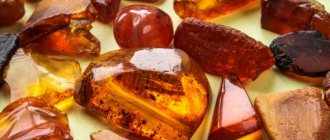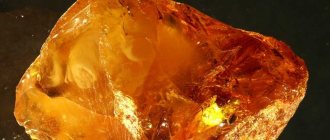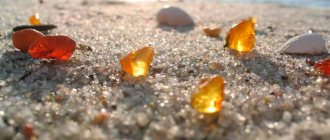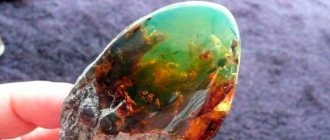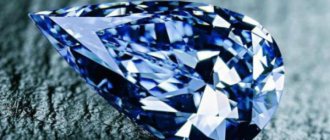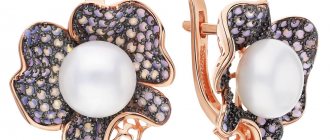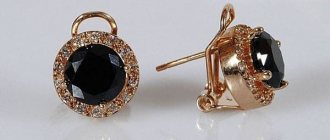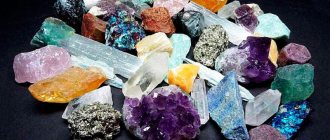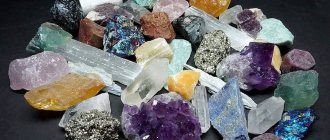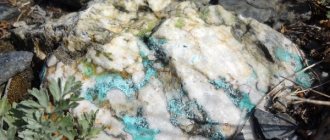Nanostallic is a synthetic mineral that has more or less pronounced transparency and a wide range of shades. It is created by crystallizing the most ordinary glass, prepared with the addition of the necessary chemicals. The result is a material with very high performance characteristics. For those who are interested in Nanoall, as well as those who want to find out what kind of stone it is, the article below will provide comprehensive answers.
How is Nanotal produced?
Nanostal is produced only in Russia, the factory is located in the Moscow region. The production technology of this artificial stone is patented, so other brands cannot copy it.
Scientists synthesize nanotal by melting the initial multicomponent composition followed by crystallization heating. This technology makes it possible to obtain an insert that is most similar to the natural prototype. The manufacturer has the opportunity to adjust the composition to achieve the desired color and appearance.
Advertising - Continued below
Historical background about Nanotal
If we talk about the technology itself for creating artificial stones, it has existed today for more than 50 years. And the formula used to create the modern version of nanoalloy is somewhat later.
We have already mentioned that the only company in the world producing the mineral is the Russian RusGems. Its lifespan on the global synthetic jewelry market is a little more than fifteen years. The organization's experts are constantly improving the quality of manufactured crystals and expanding their color range.
Chemical and physical properties
Set with nanotals.
Photo: SOKOLOV Nanostal can be heated up to 800 °C without changing its properties and shade, that is, it can be used in jewelry casting. It has decent hardness - 7 on the Mohs scale. The density of applied material is from 3.2 to 3.4 g/cm3, which is about the same as most natural stones.
The refractive index (1.65−1.7) is slightly higher than that of the glass itself (1.45−1.54), plus the former has a noticeably greater dispersion (0.015 versus 0.005−0.007), thanks to which it looks much more impressive in decoration and plays beautifully in the light.
AREAS OF APPLICATION
- Oil companies, engineering plants, dental clinics and ordinary housewives cannot imagine their lives without glass ceramics.
- This unique mineral is used in mechanical engineering to coat parts with it. This protects against corrosion and adds shine.
- Sitall pipes are valued in the oil refining industry: they are thermally and mechanically stable, high-strength and reliable.
- Aviation is a high-tech field. It is not surprising that glass ceramic has found application here too. Glass ceramics based on it are used for rocket fairings.
- The specific composition and structure, as well as the strength of glass ceramics, have made it indispensable in dentistry - in the manufacture of fillings and crowns for teeth.
The mineral is a favorite of jewelers around the world . Its scope of application is wide - from floor coverings to jewelry.
The stone is used to produce lenses and mirrors, and can be found in microcircuits and transmitters. Irons and pots are made from glass ceramics.
Sital in occult practices
- Lovers of mysticism may be disappointed, but the sital stone does not have healing or magical properties. This is a synthetic mineral. It was created by scientists in a laboratory, not by Mother Nature, which means it doesn’t have the power of real stones.
- Flaw? Most likely not, because natural stones do not always have positive energy. An incorrectly chosen amulet can bring trouble to its owner. Sital will get rid of this problem.
We recommend: Determining a REAL DIAMOND
Sital in jewelry
- Brooches and rings, earrings and bracelets - all women in the world love these jewelry.
- Delicate pink “carnations” will complement an office outfit, and a luxurious ruby necklace will match an evening dress that will make you the star of a dinner party.
- Dazzling shine and rich color - all this is sital. Jewelers' love for this stone has been spoken about more than once. Sital is used in all types of jewelry as a worthy replacement for precious stones.
- The gem is combined with gold, silver and platinum. Such a duet can safely be called impeccable. Even the most experienced connoisseur will not guess that the shine of the stone is unnatural.
Benefits of Nasital
Earrings with nanotal. Photo: MASKOM
Brooch with amethyst, cubic zirconia and nanostal. Photo: Moscow Jewelry Factory
Ring with nanostal under sultanite. Photo: YUK ESTHET
Main advantages of nanostal:
- It is convenient for jewelers to work with it. It polishes well, can be inserted into castings, and is close in characteristics to natural stones.
- He is available. Nanostal is much cheaper than its natural analogues, but is visually similar to them.
- Diversity. As mentioned above, the shades and colors of nanostal can be completely different: from classic natural to glowing in UV light and rainbow.
- Safety. Nanotal does not contain any components that can cause harm to humans or cause allergies.
Jewelry
The production of stone for the jewelry industry became possible in the new millennium, with the advent of nanotechnology. Initially, it was intended to copy sapphires and emeralds. However, today all samples of any color are created at a given size.
London office
Types of stone
Dozens of types of jewelry were received. The main ones are the following:
- ametrine - copies a rare and expensive two-color stone (a mixture of amethyst and citrine);
- citrine from Madeira;
- tourmaline - the Paraiba variety is especially good;
- tanzanite;
- trillions of pomegranate;
- London chair;
- sultanite
Nanosynthetics imitate any natural stone, but they are cleaner and more transparent than natural stone.
Product range
The power of nanometals is such that jewelers create a full range of jewelry, from pendants to massive necklaces:
- The stones are framed in silver or gold, combined with white or colored zircons.
- The style of the products allows you to choose decorations with seats for all occasions: in the office, on a walk or at a prestigious banquet.
- For day trips, a palette that imitates opaque stones is appropriate: opal, cacholong, agate, turquoise and others.
Sitall in jewelry
Sitalls are heavy. Some caution will be required if they are combined into one with cubic zirconia. The latter are more vulnerable.
Price
The synthesized material is financially accessible to everyone. The cost of finishing is determined more by the frame material.
Prices of Russian manufacturers (thousand rubles):
- silver earrings with sitall - 2.3-4.5;
- silver ring - 3.4-6.7;
- gold earrings - 34-45;
- gold ring - 31-48.
The terms “ceramic glass” and “nano metal” are equivalent in the jewelry industry. Both labels and descriptions are used.
The most expensive are red ruby crystals. Then there are blue stones, glass-ceramic blue (imitating aquamarine), and lilac. However, the difference in the price of inserts does not exceed a couple of tens of percent.
Disadvantages of Nasital
Nanostal cannot always compete with natural stones and even their artificial copies in terms of their appearance. Thus, in terms of refractive index, amethyst, citrine, aquamarine, emerald, tourmaline and topaz are approximately equal to it. However, for natural spinel, sapphire, ruby, alexandrite, pyrope, spessartine, almandine, demantoid and, of course, diamond, this figure is higher.
Advertising - Continued below
But in terms of light dispersion (the ability to break white light into all the colors of the rainbow), nanostal is significantly inferior not only to diamond, but also to its synthesized analogues - cubic zirconia and moissanite.
And although the impeccable purity of nanotal allows it to look good in any form of cut, if it replaces precious sapphires, rubies or emeralds, the crystal transparency may look somewhat unnatural and “harm the eye.”
What is the difference between nanostal and hydrothermal stone?
Hydrothermal stone, like Nastal, is created by man in a laboratory. However, their main difference lies in their composition. Nanostal is a glass crystallized in a certain way with the addition of silicon and aluminum oxides. While a hydrothermal stone chemically replicates its natural prototype (most often it is an emerald, ruby or sapphire), it is simply grown in artificially recreated conditions.
Advertising - Continued below
Other differences follow from the first difference. Being dependent on the natural original, hydrothermal stone does not have such a rich palette of shades as nanostal. The hardness of hydrothermal stone (7.5-8 on the Mohs scale) is on average higher than that of nanostal (7 on the Mohs scale). In addition, these jewelry inserts are produced using different technologies.
Nanosall – what is it?
Nanostal is an optical polycrystalline stone created under artificial conditions, varying in the degree of its transparency. The process of obtaining it involves the crystallization of glass with the necessary chemical components, resulting in a material that has higher properties than the original glass.
Nanostal is included in the category of glass-crystalline materials with a wide range of uses.
Today nanoalloy is produced by only one company in the world – the Russian RusGems. The company’s experts spent a long time developing the most optimal technologies in order to ultimately obtain the perfect artificial material.
The basis of the nanometal is the oxides SiO2 and Al2O3. Then other ingredients are added to the composition, the presence of which ensures the planned physical and chemical properties, as well as those external indicators, thanks to which the nanoalloy is as similar as possible to natural gems.
A stone can have any color characteristics, vary in size and degree of transparency. Buyers will be pleasantly pleased with the fairly affordable cost of jewelry with nanoalloy, plus it is not always possible to distinguish between a natural stone and a fake without special education and equipment.
An important advantage of the gem is that it does not contain harmful components or impurities, so jewelry with nanoalloys will not harm your health.
Differences between nanotal and cubic zirconia
Initially, cubic zirconia was developed as a replacement for the classic colorless diamond, although later they learned to synthesize stones of other shades. Naturally, this implied a desire to approach the gemstone in quality and optical properties. This is where the biggest difference between cubic zirconia and nanostal lies.
Thus, the hardness of the first is noticeably higher: 8−8.5 on the Mohs scale versus 7. In addition, the creation of scientists from the Institute of Lebedev Physical Institute surpasses its glass-ceramic counterpart in terms of the refractive index: for cubic zirconia it is 2.17 (for diamond it is approximately 2.5), and for nanostal it is about 1.7. The dispersion of cubic zirconia is 4 times higher than that of a competitor. This means that the former, in its brilliance and “fire,” is much more similar to natural stone than the latter.
Advertising - Continued below
Cubic zirconia has twice the density and about one and a half times the melting point. However, nanostal has one undeniable advantage - it does not change color when heated when casting with metals.
Existing colors
The first sitalls, as noted above, could not boast of either beauty or richness of shades. The oxides of some metals used initially gave a brown-green color. Only later was it possible to obtain first a milk sample, and then others. Today it is not difficult to find copies:
• purple; • blue; • green; • pink; • dark red; • brown; • purple, etc.
What is the difference between nanotal and moissanite?
Moissanite, like cubic zirconia, was created as an imitation of diamonds. However, in terms of its optical properties, it even managed to bypass the king of precious stones. Thus, the refractive index of moissanite can reach 2.69 (versus 2.5 for diamond and 1.7 for nanostal), and the dispersion is 0.104 (versus 0.044 for diamond and 0.015 for nanostal).
Therefore, it is quite obvious that in terms of internal “fire” or play of light, an artificial diamond is superior to all competitors. In addition, moissanite has a very high hardness: 9.25 on the Mohs scale, which is very close to the perfect ten of diamond. For nanostal, let us remember, this indicator is 7 on the Mohs scale. The cost of high-quality moissanite is on average more than 10 times higher than that of nanosalite.
